Camping Dome Tents: A Stable and Popular Choice for Outdoor Adventures
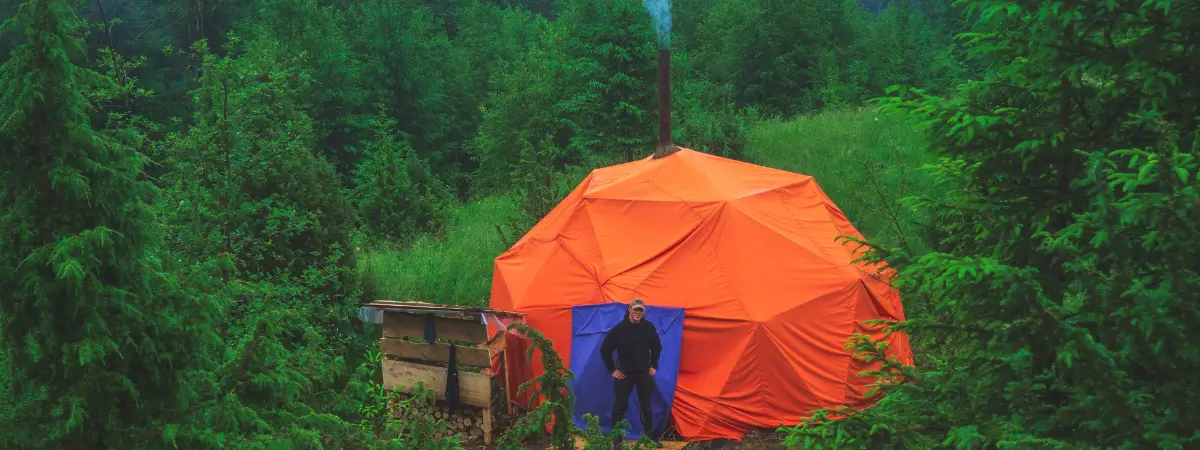
Camping dome tents are a popular choice for outdoor enthusiasts due to their stability, ease of setup, and spaciousness.
They are characterized by their dome-shaped design created by flexible poles that criss-cross each other and are anchored to the ground.
This structure provides excellent wind resistance and allows for a large interior space compared to other tent designs.
Dome Tent Benefits
- Easy Setup and Take Down: Dome tents typically boast an intuitive design with color-coded or numbered poles, making them a breeze to assemble and disassemble, even for first-time campers. This eliminates the frustration of complicated setups, leaving more time to enjoy the outdoors.
- Stability and Weather Resistance:
- Built for the breeze: The dome shape with its crisscrossing poles creates exceptional stability and wind resistance, ensuring your tent stays put even on blustery nights.
- Rain or shine: Dome tents boast a sloping rainfly or waterproof fabric that sheds water like a duck, preventing puddles and keeping you dry.
- Snow worries: Light to moderate snowfall is no match for a dome tent’s rounded design. The snow slides right off, preventing dangerous buildup and collapse.
- Lightweight and Portable: Many dome tents are constructed from lightweight materials, making them easy to carry and transport. This makes them ideal for backpacking, hiking, and other outdoor adventures where you’ll be carrying your gear.
- Affordable and Versatile: Compared to other types of camping tents, dome tents are generally more affordable, making them a budget-friendly option for casual campers and families. Their versatility allows them to be used in various camping situations, from car camping to backpacking adventures.
These combined benefits make dome tents a popular choice for campers of all levels, offering convenience, peace of mind, and adventure-ready portability.
Types of camping dome tents
Dome tents are available in a variety of sizes and styles to accommodate different needs and budgets. Here are some of the most common types of camping dome tents:
1. Classic Dome Tent
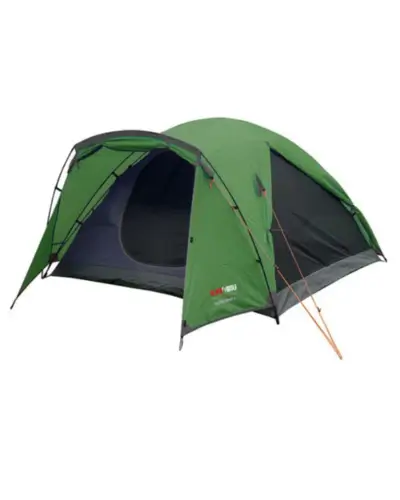
These are the most common type of dome tent. They have two or three poles that cross in the center and are anchored to the corners of the tent.
They are typically lightweight and easy to set up, making them a good choice for car camping and backpacking.
Classic dome tents are available in a range of sizes, from single-person tents to large family tents.
2. Geodesic Dome Tent
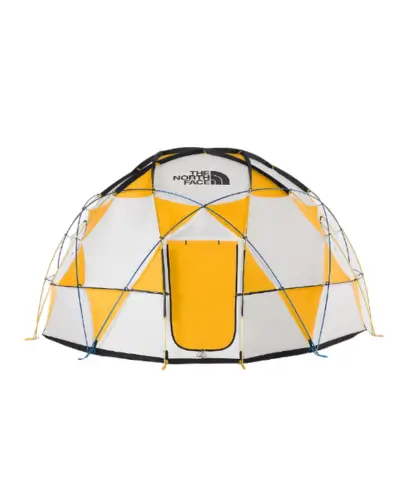
Geodesic dome tents are similar to classic dome tents, but they have more poles that criss-cross over the surface, intersecting to form triangles.
This design provides additional stability in windy conditions, making them a good choice for camping in exposed areas.
Geodesic dome tents are typically more expensive than classic dome tents, but they offer superior strength and weather protection.
3. Tunnel Dome Tent
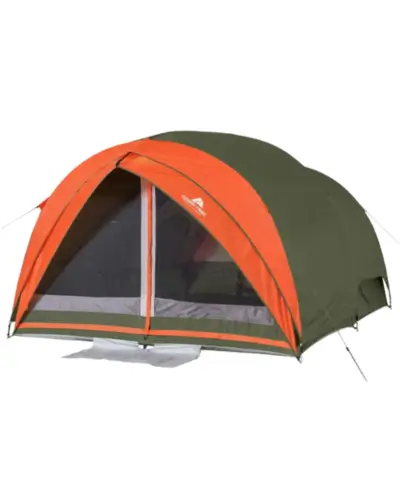
This type of dome tent combines the features of a standard dome tent with a tunnel tent.
It has two main poles that run parallel to each other, creating a tunnel-like shape, with shorter cross-poles that create the dome shape.
This design provides more headroom and living space than a standard dome tent, while still being relatively easy to set up.
4. Pop-Up Dome Tent
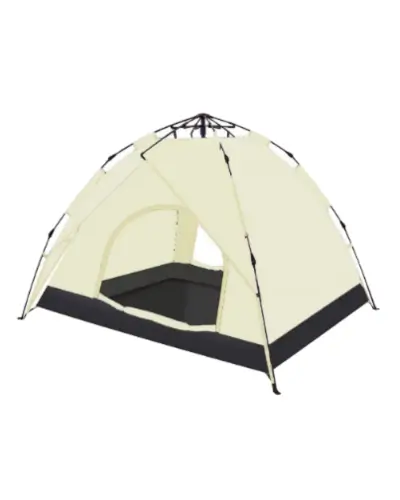
Pop-up dome tents are designed to be quick and easy to set up. They typically have a pre-assembled frame that pops up into place when you remove it from the carrying case.
Pop-up dome tents are a good option for casual campers who want a quick and easy setup.
However, they are typically not as stable or weather-resistant as other types of dome tents.
5. Inflatable Dome Tent
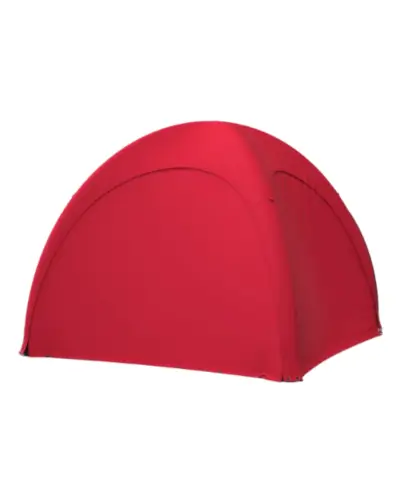
Inflatable dome tents have air beams instead of traditional poles. This makes them very lightweight and easy to set up.
Inflatable dome tents are a good option for backpackers and campers who want to save weight.
But, they are more expensive than traditional dome tents and can be susceptible to punctures.
Read also: Tents That Look Like House
Factors to consider when choosing a dome tent
The size of your dome tent should be determined by the number of people who will be using it.
A cramped tent can quickly turn a relaxing camping trip into an uncomfortable experience.
Consider the size of your sleeping bags, gear, and any additional space you might want for lounging or changing clothes.
- Solo: For solo camping, a two-person tent should suffice.
- Couples: Couples will likely want a three-person tent for added comfort.
- Families: Families with small children can opt for a four or five-person tent, while larger families might require a six-person or even larger tent.
“We used a dome tent for our family camping trip to Yosemite National Park. I loved the spacious interior – it felt like a little living room! We could all sit up comfortably and play games, and at night, we could lie down and gaze at the stars through the mesh panels at the top. It was like having our own private planetarium.”
Sarah K., from San Francisco, CA
Weight plays a crucial role if you plan on carrying your tent long distances. Backpacking or hiking adventures necessitate a lightweight and compact tent.
However, if you’ll be car camping, weight might not be as important, allowing you to prioritize features and comfort over portability.
The type of weather you plan to camp in significantly impacts your choice of tent. For summer camping, a lightweight tent with good ventilation is ideal.
For colder weather or areas with strong winds, invest in a heavier-duty tent with a robust frame and weather-resistant materials.
Dome tents are available in a range of prices, depending on the brand, size, features, and materials used.
Determine your budget before shopping and prioritize features that are important to you. Some common features to consider include:
- Vestibule: Provides additional storage space for gear.
- Pockets: Organize your personal belongings.
- Mesh walls: Enhance ventilation and stargazing.
- Rainfly: Protects from rain and snow.
“I’m not the most experienced camper, so I was a little nervous about setting up the tent. But my dome tent was so easy to put together! The poles just clicked into place, and it was up in no time. I felt so accomplished!”
Jessica A., from Denver, CO
Setting Up and Taking Down Your Dome Tent
Dome tents are known for their ease of setup and portability, making them a popular choice for campers of all levels.
Understanding the proper steps for setting up and taking down your tent ensures a smooth and stress-free camping experience.
A. Essential Gear and Supplies
Before heading out on your adventure, ensure you have all the necessary gear:
- Dome tent: Choose a tent that fits your needs and the environment you’ll be camping in.
- Tent poles: Most tents come with their own poles, but double-check to ensure they’re included.
- Rainfly: Protects your tent from rain and snow.
- Stakes and mallet: Secure your tent to the ground.
- Sleeping bag and pad: For comfort and warmth. Learn how to increase the R-value of your sleeping pad.
- Ground tarp (optional): Provides an extra layer of protection between the tent and the ground.
- Flashlight or headlamp: For seeing in the dark.
B. Choosing the Right Location
Finding the perfect spot to pitch your tent is crucial for a comfortable and safe camping experience. Here are some key factors to consider:
- Flat and level ground: Avoid uneven terrain that could cause your tent to tilt or roll. Learn how to keep your tent off the ground.
- Clear of obstacles: Remove any rocks, branches, or other objects that could damage your tent or hurt you.
- Shelter from wind and rain: Look for natural windbreaks or trees for protection.
- Away from water sources: Avoid camping near rivers, lakes, or streams, as they can flood during heavy rain.
- Good drainage: Choose an area with good drainage to prevent water from pooling around your tent.
Where Should You Not Put a Tent?
Here are some places you should avoid setting up your tent:
- On slopes or inclines: Your tent could roll or slide down the hill.
- Under dead or dying trees: Falling branches could damage your tent or injure you.
- Near water sources: Flooding is a risk, and insects are often more prevalent near water.
- On top of anthills or beehives: Avoid disturbing wildlife and potential insect bites.
- In areas with high fire danger: Follow local fire regulations and avoid areas with dry vegetation.
Read these 13 Essential Campsite Safety Tips
C. Step-by-Step Guide to Setting Up Your Dome Tent
- Clear the area: Remove any rocks, twigs, or debris from the area where you will be pitching your tent.
- Lay out the tent: Unfold the tent and lay it flat on the ground.
- Assemble the poles: Connect the poles according to the manufacturer’s instructions. Read how to remove tent pole end caps.
- Insert the poles: Feed the poles through the sleeves or clips on the tent.
- Attach the rainfly (optional): Drape the rainfly over the tent and secure it to the poles and the ground. Learn how to hang a tarp for shade.
- Stake down the tent: Hammer the stakes into the ground at the corners and guylines of the tent. Read how to secure a tent without stakes.
- Tighten the guy lines: Ensure the tent is taut and secure.
D. How Long Does a Dome Tent Last?
The lifespan of a dome tent depends on several factors, including the quality of the materials, how often it is used, and how well it is cared for.
With proper care and storage, a good quality dome tent can last 5-10 years or even longer.
Tips for Efficient Take Down and Storage:
- Clean the tent: Brush off any dirt or debris before folding it up. Read how to clean a tent with mold
- Dry the tent completely: Never store your tent damp, as this can lead to mold and mildew.
- Fold the tent properly: Follow the manufacturer’s instructions for folding the tent.
- Store the tent in a cool, dry place: Avoid storing your tent in a hot attic or damp basement.
- Check the tent periodically: Inspect your tent for any damage before each camping trip.
Here is a helpful video tutorial from Travel Gigolo youtube channel, demonstrating how to Pitch/Put Up & Take Down/Fold a Canvas Dome Tent:
Tips for Optimizing Your Tent for Every Adventure
For veteran campers, the humble dome tent is more than just a nylon haven – it’s a microcosm, a portable world shaped by experience and refined with every adventure.
But even seasoned glampioneers can learn new tricks to elevate their dome-dwelling game, especially when it comes to conquering the extremes of weather. So, ditch the default and dive into these tips to truly master your canvas cosmos:
Conquer stifling heat by strategically opening windows and doors, maximizing airflow. Mesh panels become your allies, replacing stuffy fabric with a cool breeze.
Opt for a reflective rainfly to deflect the sun’s rays, keeping your interior oasis pleasantly cool.
Consider a battery-powered fan for an extra boost, strategically placed to circulate air without disturbing sleep.
Embrace the dome’s natural warmth retention with strategic layering. Base layers wick moisture, while a down or synthetic fill sleeping bag traps precious heat.
Utilize a ground tarp to insulate from the cold earth, and consider a propane heater or portable stove for a cozy boost.
Hot water bottles tucked into sleeping bags become toasty companions on frigid nights.
The dome’s tight seal can trap moisture, leading to a damp and moldy interior.
Proper ventilation is key, but consider a ground tarp to prevent moisture from rising.
Experiment with different sleeping pad materials and configurations to minimize condensation buildup beneath you.
Treat your dome with care. Avoid touching the interior with wet or oily hands, as oils and dirt can compromise its waterproofness.
Clean the tent regularly with mild soap and water, ensuring thorough drying before storage.
Choose a cool, dry place for storage, preventing mildew growth and fabric degradation.
Read more about why do tents leak? Causes and effective solutions
Over time, even the best rainflies lose their water-repelling magic. Reapply a waterproof spray periodically to maintain a formidable barrier against the elements.
Remember, a well-maintained dome is a weatherproof fortress, ready to conquer any adventure.
Read more about waterproofing a canvas tent.
- Gear Loft Genius: Craft a simple hanging gear loft from fabric and rope to maximize floor space and keep essentials organized.
- Shoe Savvy: Create a designated shoe storage pocket near the tent entrance to keep mud and dirt out of your living quarters.
- Light Show: String up LED fairy lights for a touch of ambiance and night-time visibility.
FAQ’s
Can You Stand Up in a Dome Tent?
Whether you can stand up in a dome tent depends on its size and specific design. Most standard dome tents are designed for sitting or sleeping, with a maximum height of around 5 feet. However, some larger models or “cabin-style” dome tents offer ample headroom, allowing you to comfortably stand up.
When Should You Use a Dome Tent?
Dome tents are a versatile and popular choice for campers, but they’re not the best fit for every situation. Use a dome tent when you’re car camping, camping in fair weather, on a budget, want a quick and easy setup, and when you need a spacious interior.
Are Dome Tents Better in the Wind?
Yes, dome tents are generally considered better in the wind than other tent designs. Their rounded shape creates a more aerodynamic structure, allowing wind to flow over the tent instead of catching it and causing it to collapse. Additionally, many dome tents come with guy lines and stakes that can be used to secure the tent to the ground, further increasing its stability in windy conditions.
What is the best tent color for hot weather?
For hot weather camping, choosing a light-colored tent is crucial. Light colors, such as white or light gray, reflect sunlight, keeping the inside of the tent cooler than darker colors, which absorb heat.
Conclusion
Camping dome tents are a versatile and popular choice for campers of all levels due to their ease of use, stability, and affordability.
When choosing a dome tent, consider your needs and the type of camping you will be doing to ensure you select the right one for your next outdoor adventure.
So, whether you’re a seasoned camper or a beginner, we’d love to hear your thoughts on dome tents. Leave your comments below and join the camping conversation. Happy camping!